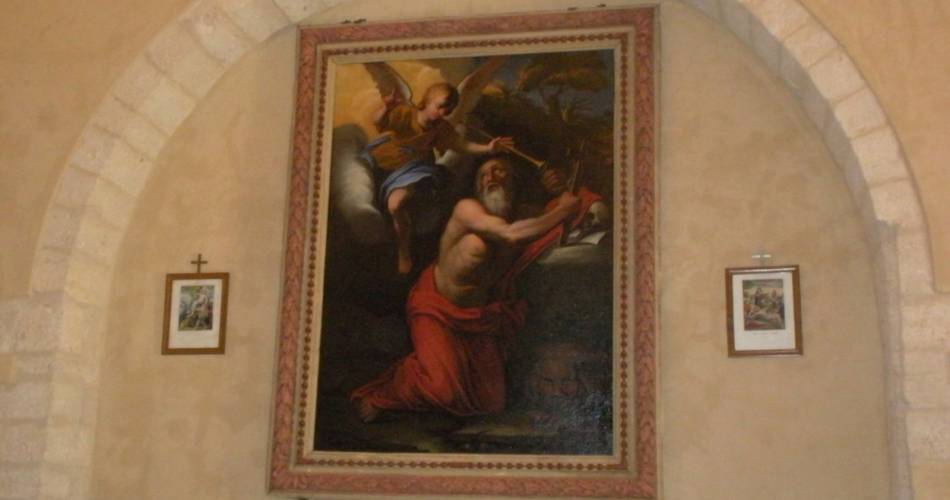Peypin-d'Aigues
Eglise Paroissiale Saint Jérôme
Tourist service in Peypin-d'Aigues :
From the XI century, the Priory of Our Lady of Climans, chapel and cemetery exist Nôtre Done. Of the priory, the poorest of the diocese, there remains no vestige. Cemetery was used until 1667. The first parish church of Peypin was founded by Cluny monks Lure receiving the Chapter of Aix, late twelfth century, the beginning of XIII, the administration of the two priories of St. Martin Peypin, unknown location, and Notre lady Climans. The church, mentioned from 1274 under the patronage of Saint Giraud, one of the priors of the order of Cluny, is built at the foot of the hill village of Castelas and accompanied by a monastic grange and its cemetery . Played at the beginning of the fourteenth century between the Abbey of Lure and Chapter of Aix, the possession of the building back in 1306 to the canons of Saint-Sauveur d'Aix. During his visit in 1343, the Archbishop of Aix is the church in good condition. Restoration was probably necessary at stocking Peypin. Priory church with Peypin earn 40 loads of wheat every year, carried in Aix Chapter Saint-Sauveur (1530). In 1541, parishioners complain that for nearly forty years the Chapter Aix neglect the maintenance and service of the parish: it rains in the church almost totally devoid of furniture and ornaments. In May, in the presence of trustees and village, delegates of the Parliament of Provence visiting places of worship. Summons is addressed in Chapter Aix to repair and maintain the priory. In 1582, the church is still not serviced regularly, forcing Catholics to go to Grambois or Tour d'Aigues to baptize their children. 1615, Chapter Aix finally establishes a priest in this church that now bears the name of Saint Jerome. In 1619, the Catholic community of Peypin wants to enlarge the nave, but the extra bay, poorly constructed quickly fell into ruin.We finally decided in March 1626 on the advice of Chapter Saint-Sauveur, to build the new church on its present site in the village. This is a company that builds pertuisienne building Catholics provide the materials. Next to the church, they install the cemetery was enlarged in 1687. The old church and cemetery will be desecrated in 1662. The church became the private chapel of scorpionfish (St. Jerome), the sanctuary still existed in 1730. There remains today no more visible remnant. Despite the Edict of Nantes (1598), prohibition against Protestants to bury their dead in Catholic cemeteries, which forces them to find graves. Install some private tombs on their land, there are still around Fontjoyeuse, Roux, the Sarrière, Sandstone, and the present cemetery. The Revocation of the Edict of Nantes (1685) causes the abjuration Protestants. The cemetery next to the church then receives the entire population. May 22, 1788, by order of the king, the Board deliberates on the creation of a cemetery outside the village, for the Protestants. It was decided that the cemetery will be established neighborhood of Paradise on land owned by Louis Meynard. After the Revolution is a cemetery established in its current location, on land purchased in 1828. Catholics and Protestants are separated by a wall, they each have their own entrance facing east. The cemetery was enlarged on land purchased in 1877. Later one entry will be built north side, it will open to all. Land is purchased by the municipality through a subscription Protestants Peypin. Construction takes place in 1867, with the help of government subsidies and an open subscription to a population that far exceeds the Protestant community Peypin d'Aigues, Lyon and Orange participate. Around 1975, in disrepair, due to prolonged closure, it is restored with the help of the Parc du Luberon. In agreement with the parish council, it is abandoned.It can serve as a multi-purpose hall for cultural events in the town. However, this building remains available to all Protestant cultural events. As for the church, 1755, work will be regularly necessary for its survival. In 1930, the stone bell tower with two bells threatens ruin, it must be demolished. The largest bell is removed. Lighter campanile supports small bell, he was replaced in 1984 by a simple support masonry. In 2011 the town had restored the painting kept in the church which is St. Jerome in the wilderness with the appearance of an angel playing the trumpet (17th early 18th century). The parsonage or rectory was the subject of many repairs is separated from the church and sold along with the Protestant parsonage, 1926, to enable the electrification of the village.
Contact
Eglise Paroissiale Saint JérômeRue de l'église
84240 Peypin-d'Aigues
Tel :
View number
04 90 77 76 01
E-Mail : Afficher le mail mairie.peypin.aigues@orange.fr
E-Mail : Afficher le mail mairie.peypin.aigues@orange.fr
Coordinates
Longitude : 5.569714Latitude : 43.787096
> Getting there by public transport
Nearby
This page was produced with the help of theSud Luberon Tourisme
